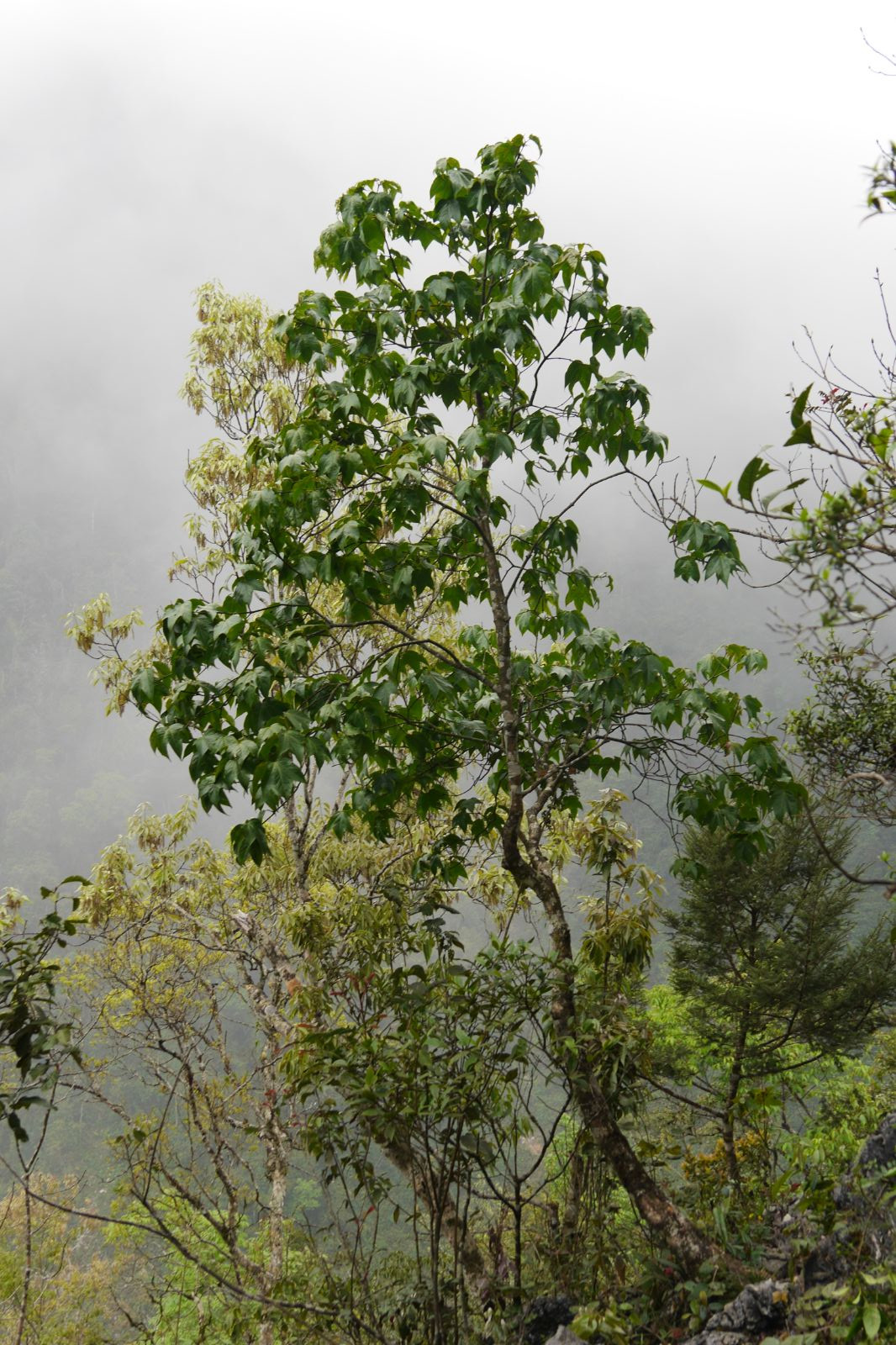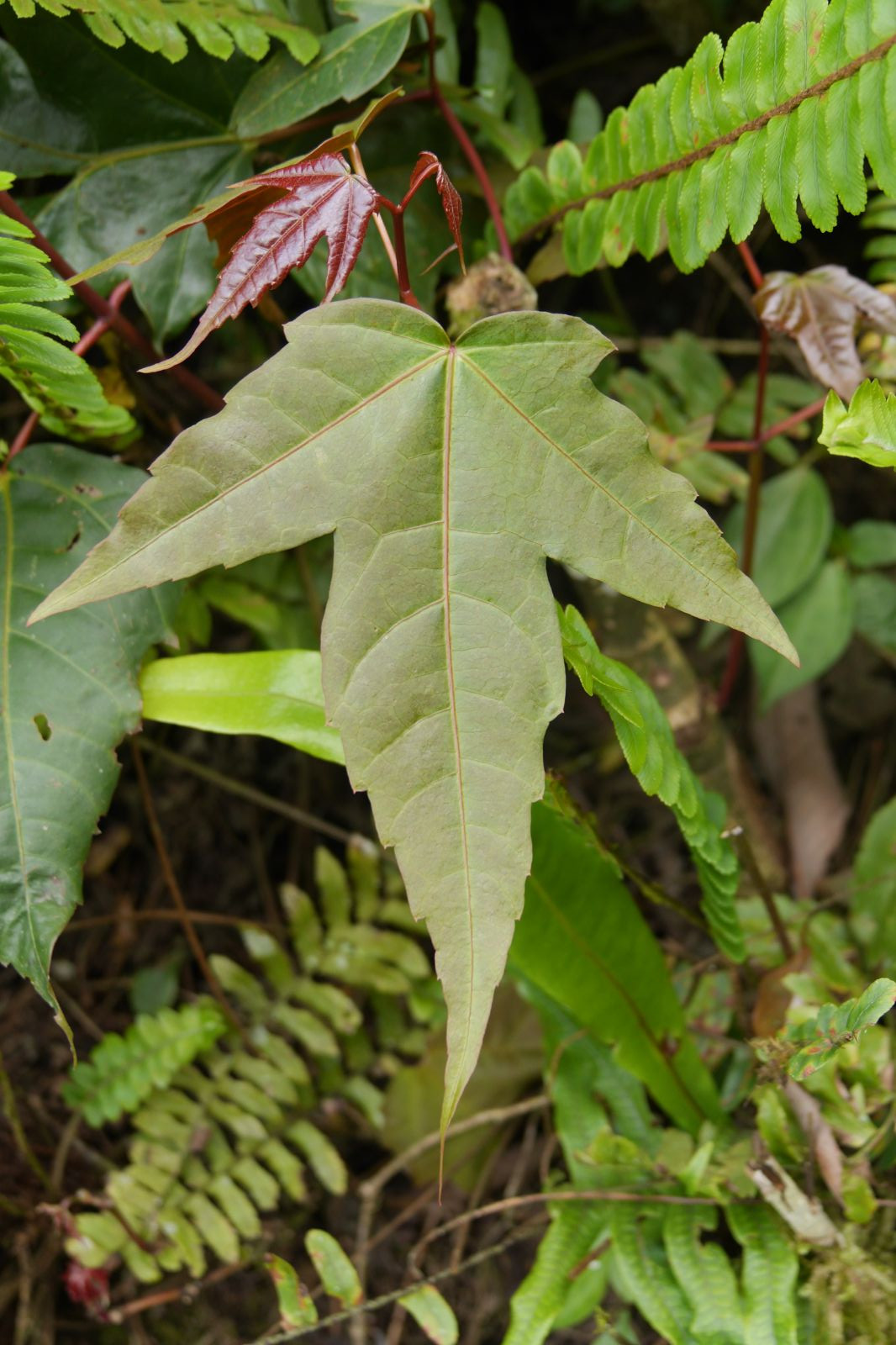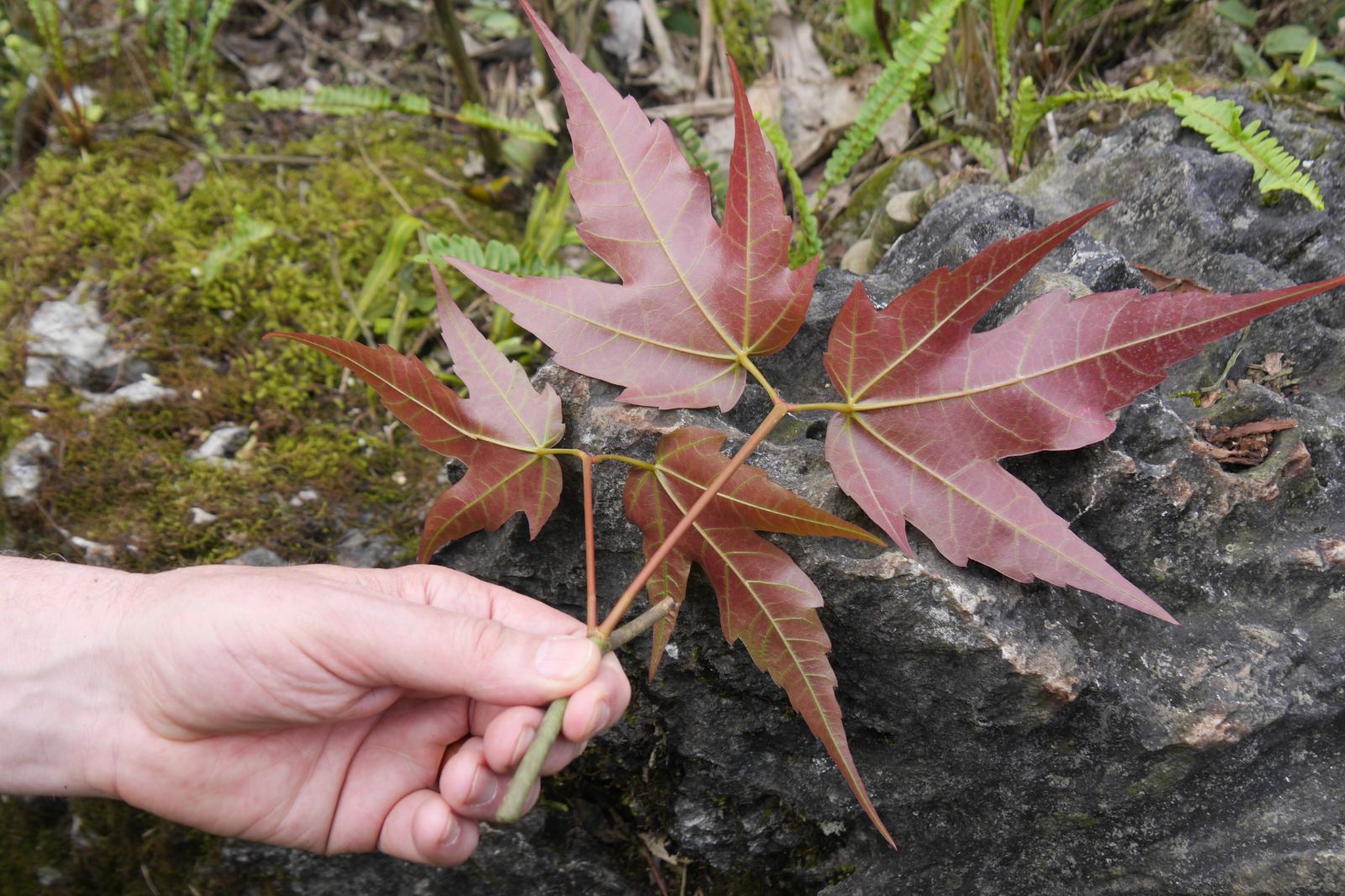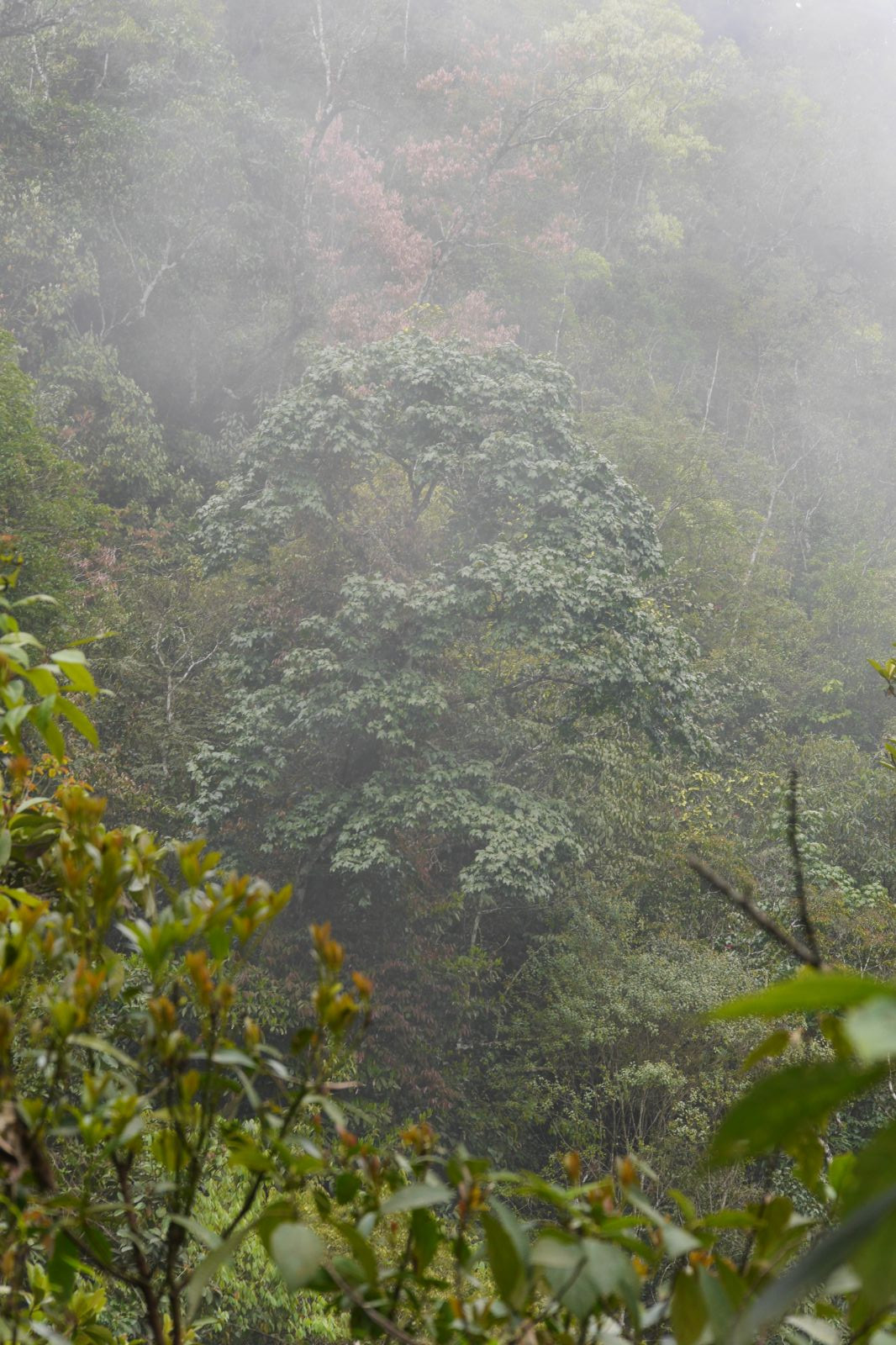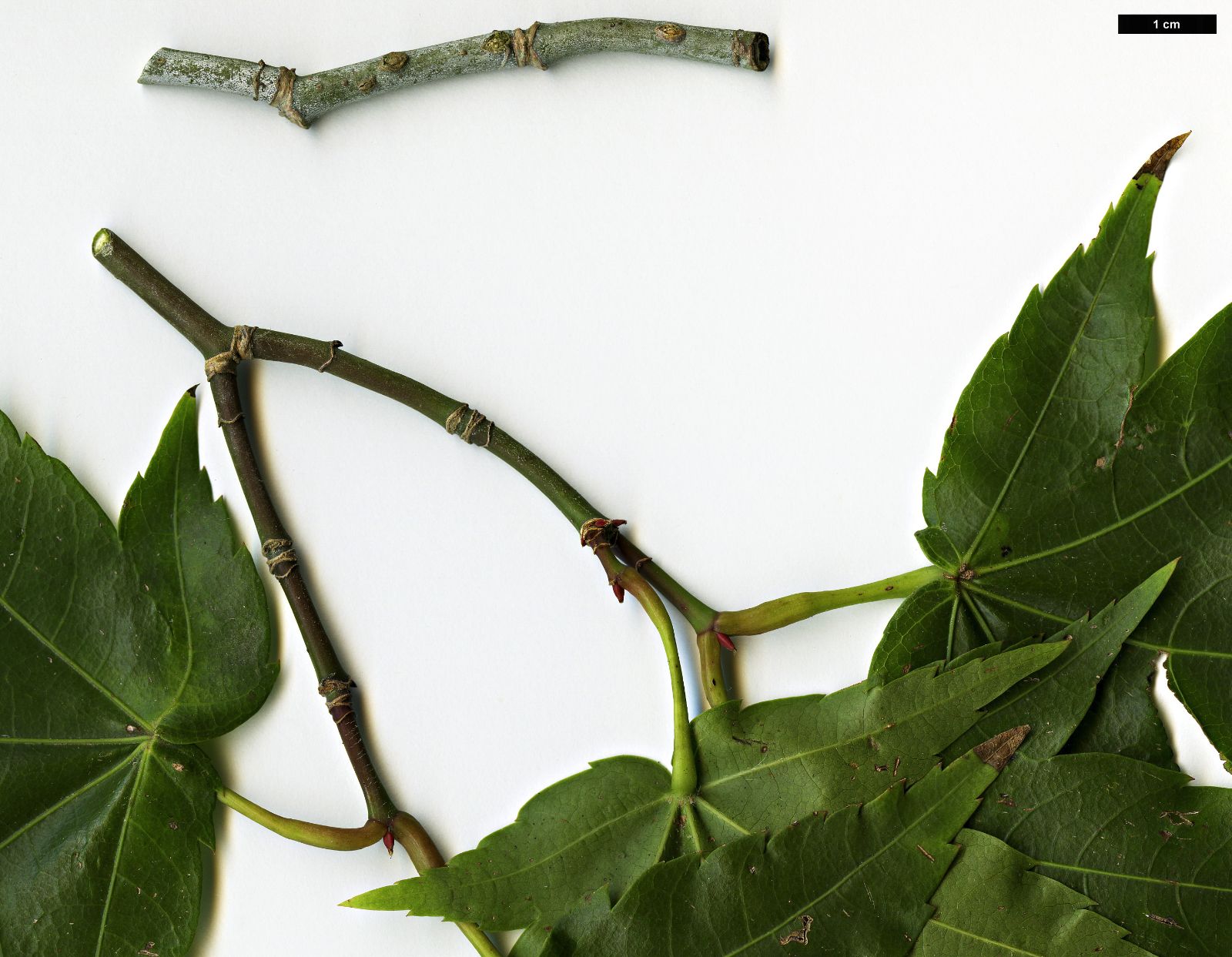Acer tonkinense
Sponsor
Kindly sponsored by
Lawrence Banks
Credits
John Grimshaw, Ross Bayton and Dan Crowley (2020)
Recommended citation
Grimshaw, J., Bayton, R. and Crowley, D. (2020), 'Acer tonkinense' from the website Trees and Shrubs Online (treesandshrubsonline.
Genus
- Acer
- Sect. Palmata, Ser. Sinensia
Common Names
- Tonkin Maple
Synonyms
- Acer tonkinense subsp. kwangsiense (W.P. Fang & M.Y. Fang) W.P. Fang
- Acer tonkinense subsp. liquidambarifolium (Hu & W.C. Cheng) W.P. Fang
Other taxa in genus
- Acer acuminatum
- Acer amplum
- Acer argutum
- Acer barbinerve
- Acer buergerianum
- Acer caesium
- Acer calcaratum
- Acer campbellii
- Acer campestre
- Acer 'Candy Stripe'
- Acer capillipes
- Acer cappadocicum
- Acer carpinifolium
- Acer 'Cascade'
- Acer caudatum
- Acer ceriferum
- Acer chapaense
- Acer chienii
- Acer circinatum
- Acer cissifolium
- Acer × conspicuum
- Acer cordatum
- Acer coriaceifolium
- Acer × coriaceum
- Acer crataegifolium
- Acer davidii
- Acer diabolicum
- Acer distylum
- Acer divergens
- Acer duplicatoserratum
- Acer elegantulum
- Acer erianthum
- Acer 'Esk Flamingo'
- Acer fargesii
- Acer fenzelianum
- Acer flabellatum
- Acer forrestii
- Acer franchetii
- Acer × freemanii
- Acer fulvescens
- Acer 'Gimborn'
- Acer ginnala
- Acer glabrum
- Acer 'Gold Coin'
- Acer granatense
- Acer grandidentatum
- Acer griseum
- Acer heldreichii
- Acer henryi
- Acer × hillieri
- Acer hookeri
- Acer hyrcanum
- Acer japonicum
- Acer kawakamii
- Acer komarovii
- Acer laevigatum
- Acer laurinum
- Acer laxiflorum
- Acer lobelii
- Acer longipes
- Acer macrophyllum
- Acer mandshuricum
- Acer maximowiczianum
- Acer maximowiczii
- Acer metcalfii
- Acer miaotaiense
- Acer micranthum
- Acer 'Mindavi'
- Acer 'Minorient'
- Acer miyabei
- Acer miyabei × campestre
- Acer monspessulanum
- Acer morifolium
- Acer 'Mozart'
- Acer oblongum
- Acer obtusifolium
- Acer okamotoanum
- Acer oliverianum
- Acer opalus
- Acer orientale
- Acer palmatum
- Acer papilio
- Acer pauciflorum
- Acer pectinatum
- Acer pensylvanicum
- Acer pentaphyllum
- Acer pentapotamicum
- Acer pictum
- Acer pilosum
- Acer pinnatinervium
- Acer platanoides
- Acer platanoides × amplum
- Acer platanoides × truncatum
- Acer × pseudoheldreichii
- Acer pseudoplatanus
- Acer pseudosieboldianum
- Acer pubinerve
- Acer pycnanthum
- Acer rubescens
- Acer rubrum
- Acer rufinerve
- Acer saccharinum
- Acer saccharum
- Acer sempervirens
- Acer 'Serpentine'
- Acer serrulatum
- Acer shenkanense
- Acer sieboldianum
- Acer sikkimense
- Acer 'Silver Cardinal'
- Acer 'Silver Ghost'
- Acer sinense
- Acer sinopurpurascens
- Acer spicatum
- Acer stachyophyllum
- Acer taronense
- Acer tataricum
- Acer tegmentosum
- Acer tenellum
- Acer tetramerum
- Acer tibetense
- Acer triflorum
- Acer truncatum
- Acer tschonoskii
- Acer turkestanicum
- Acer tutcheri
- Acer ukurunduense
- Acer velutinum
- Acer wardii
- Acer 'White Tigress'
- Acer wilsonii
- Acer × zoeschense
A deciduous tree to 12 m. Bark dark brown, smooth. Branchlets purplish-green to olive-brown, glabrous and waxy. Leaves subcoriaceous, broadly ovate in outline, 8–17 × 7–15 cm, palmately 3– to 5-lobed, lobes shallow, upper surface glabrous, lower surface glabrous but for the tufts of hair in the vein axils, margins entire or occasionally dentate (serrate in young leaves), apex acute; petiole 2–3.5 cm long, purplish-green; autumn colour orange-yellow to red. Inflorescence terminal, paniculate, 8–10 cm long, many flowered. Flowers 5-merous, usually dioecious; sepals triangular, purplish-green, petals yellowish, stamens 8, inserted inside the nectar disc, ovary pubescent. Samaras 1.8–3 cm long, yellowish, wings spreading horizontally. Flowering April to May, fruiting in September (China). (van Gelderen et al. 1994; Xu et al. 2008).
Distribution Myanmar China Guangxi, southern Guizhou, southeast Xi-zang, southeast Yunnan Thailand Vietnam
Habitat Mixed forest between 300 and 1800 m asl.
USDA Hardiness Zone 8-9
RHS Hardiness Rating H3
Conservation status Near threatened (NT)
Taxonomic note van Gelderen et al. (1994) recognised two subspecies with somewhat larger leaves: subsp. kwangsiense, with leaves 12–17 cm across with sparse teeth on the margin (cultivated by Plantentuin Esveld under glass in the Netherlands); and subsp. liquidambarifolium, with evenly lobed leaves 8–14 cm across. However, these subspecies are not accepted by Xu et al. (2008), whose more recent treatment is followed here.
Acer tonkinense is extremely rare in cultivation and was not seen in any collections visited in the course of research for New Trees. Grimshaw & Bayton (2009) summarised the little information that could be gleaned as suggestive that it is not hardy in most of our area and must be maintained under glass. It had, however, been offered commercially, most notably by Heronswood Nursery in their 2002 catalogue. The plants offered were grown from seed supplied by James Waddick of Kansas City, Missouri, obtained from Shanghai Botanic Garden, and were described as having thick leathery leaves, each of the five lobes terminating in a long-acuminate point. At Heronswood it proved ‘very hardy’ and formed a notable feature with ‘ashen lime’ stems in winter (Heronswood Nursery catalogue 2002). It comes into growth early in the year (D. Hinkley, pers. comm. 2007).
More recently, Dan Hinkley’s introduction of Acer fenzelianum (DJHV 06173), from Vietnam, has been erroneously circulated as A. tonkinense subsp. liquidambarifolium (listed in synonymy here). See the account of A. fenzelianum for more details of this collection. In Vietnam A. tonkinense appears to be restricted to limestone areas, such as in northern Ha Giang Province, and is absent from the Hoang Lien Mountain range, including Fan Xi Pan, from where numerous maple collections have recently been made. In that part of its range mature specimens are few and far between (pers. obs. 2017, 2018). As with many species its juvenile foliage can be markedly different from that of mature plants – its young leaves can be deep red to purple in colour, with this coloration persisting for some time on the lower surfaces.

